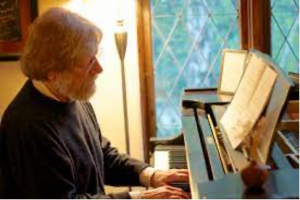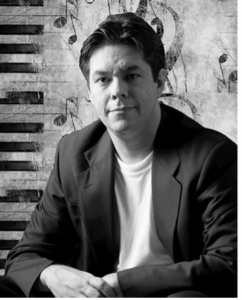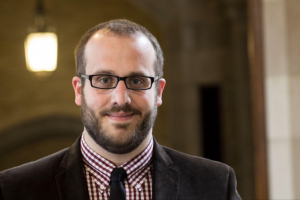The Suggested Repertoire from Around the World for Developing Bands series is a new WASBE program of instructional materials to assist music directors in identifying exceptional works from around the world that are playable by developing musicians. Each of the selections in this series provides a myriad of musical elements that might be explored and developed within the rehearsal context, but the goal is to present music of artistic merit that aligns most directly to the composer’s unique voice. These are selections that stand out from works written largely for teaching purposes.
Our installments include four-five such works, each to be contributed by WASBE members from throughout the world. The offerings include exceptional and diverse works from around the world. Some of the selections will be well known while others will be quite unfamiliar to most – and there will be more than a few older compositions that we hope will be revisited, reacquainted, or discovered anew.
This 7th installment (August 2023) is submitted by WASBE member and conductor Leila Marina Gil, from Argentina.
“The program tries to reflect and include a wide range of compositional techniques, cultures, and composers with different backgrounds. These pieces would work well together as part of a shared program (the total time of music is under 20 min). In addition, the duration could be expanded by adding other numbers of Victoriano Valencia’s “Ritmos de la Tierra”. On the other hand, these pieces would work fine if included in different programs and would definitely add character and prominence to them.”
Grade 3
Spring Festival (2000) – 3’ – Hal Leonard
Chen Yi (China/USA, 1953)
Video with score: https://youtu.be/v5oa6M-5Ivk

Dr. Chen Yi is a prolific and compelling composer who explores different compositional techniques and merges Chinese and Western tradition into her compositions. Dr. Chen received her bachelor and master degrees from the Central Conservatory in Beijing, China. Later, she moved to the US, getting a Doctorate of Musical Arts degree from Columbia University in the City of New York. She is a recipient of numerous awards, including commissions and fellowships from Guggenheim fellowship (1996), American Academy of Arts and Letters (1996) and the ASCAP Concert Music Award (2001). In 2006, she was a finalist for the Pulitzer Prize for music with her work Si Ji (Four Seasons). In addition to her composer career, Chen Yi is a prolific violinist. Currently, she is part of the composition faculty at the UMKC (University of Missouri Kansas City) Conservatory.
“Spring Festival” was commissioned by American Composers Forum’s Bandquest project in 1999.
It is a very good example of the previously mentioned fusion between Chinese and Western traditions. The piece incorporates Chinese Folk music while the form of the piece is based out of the Golden Section idea. It is a celebration of the Chinese New Year and all the traditions that accompany this occasion. This is shown in the vibrant and energetic music. The melody is based on a southern Chinese folk ensemble piece named “Lion Playing Ball”. It asks for decisive and strong articulation and rhythmic precision. Orchestration is colorful with some energetic and algid moments. The essence of a celebration is very well depicted throughout the piece. In addition, it is an excellent way to introduce the ensemble to different cultures and traditions.
Grade 3/3.5
Contre Qui, Rose (1993/2006) – c.5’ – Peer Music Classical
Morten Lauridsen (USA, 1943)/arr. H. Robert Reynolds
Perusal Score: https://www.jwpepper.com/Contre-Qui%2C-Rose/10014298.item

Morten Johannes Lauridsen is an American composer who won many recognitions throughout his career. He is a composition faculty at the University of Southern California, where he also got his degree. Most of his compositions are for choir and different vocal settings. In 2006 the National Endowment for the Arts named him “American Choral Master”.
Robert Reynolds (b. 1934) is a conductor who has contributed immensely to the wind band field. Among some of the positions he held during his career is the past presidency of associations such as the College Band Directors National Association (CBDNA) and the National Band Association (NBA). He has been a professor to many prominent and prolific conductors.
“Contre Qui, Rose” is a beautiful choral-like work, great to work balance, phrasing, and intonation while introducing the ensemble to another form of art (poetry). The transcription for the wind band is well crafted and well orchestrated.
In the words of the composer: In addition to his vast output of German poetry, Rainer Maria Rilke (1875-1926) composed nearly 400 poems in French. His poems on roses struck me as especially charming, filled with gorgeous lyricism, deftly crafted and elegant in their imagery.
Contre Qui, Rose is the second movement of my choral cycle Les Chansons des Roses, on poems by Rilke, a poet whose texts were also used for my Nocturnes and Chanson Éloignée. Rilke’s poetry is often multilayered and frequently ambiguous, forcing his reader to use his or her own imagination to grasp the text. This wonderful little poem poses a series of questions, and the corresponding musical phrases all end with unresolved harmonies, as the questions remain unanswered. We have all been in situations where we have given affection and not had it returned, where attempts at communication have been unsuccessful, met by resistance or defenses of some kind. A sense of quiet resignation begins the setting as the stark harmony and melodic line, filled with unresolved suspensions and appoggiaturas, gradually build to a nine-part chord on [“on the contrary”] and then the music folds back on itself, ending on a cluster that simply fades away as does the hope of understanding the reasons for the rose’s thorny protection.
Against whom, rose,
Have you assumed these thorns?
Is it your too fragile joy that forced you
to become this armed thing?
But from whom does it protect you,
this exaggerated defense?
How many enemies have I lifted from you
who do not fear it at all?
On the contrary, from summer to autumn
you wound the affection that is given you.
Grade 2
The Machine Awakes (2013) – 5’39 – https://www.stevenbryant.com/music/catalog
Steven Bryant (USA,1972)
Perusal score: https://www.stevenbryant.com/wp-content/uploads/2013/01/BRYANT_The_Machine_Awakes_PERUSAL.pdf
Recording: https://youtu.be/7-BHOEkU6U4

“The Machine Awakes” is a piece with a concept that is contemporary: something, a machine, not human but alive, that is waking up for the first time. In the midst of Artificial Intelligence peak, and the huge trend of letting technology shape our lives, putting music to it is an interesting way of interpreting the times we are living in. The piece builds up little by little, with some effectist elements that give the journey excitement. This is a good way to introduce electronic elements in the ensemble and to work endurance and ensemble hearing in addition to rhythmic and tempo precision. To interpret this piece it is necessary to know the program notes and create a story for the audience through the interpretation. The electronics for this work are triggered from a computer via a self-contained program that is free to download and available in the composer’s website.
Steven Bryant’s works encompass different elements in a well crafted way. Bryant won the ABA Ostwald award for his piece Concerto for Alto Saxophone in 2014. He is a three time winner of the NBA Revelli Award for his pieces Radiant Joy (2007), Suite Dreams (2008) and Ecstatic waters (2010). His pieces for wind ensemble push boundaries and challenge both players and audience. His freshness and sense of humor can be heard in the agility and wit of his compositions. He strongly values music education and therefore he has many pieces for developing musicians.
Grade 2-4
Ritmos de La Tierra (Danzón) (2013) – 3’15 – https://www.victorianovalencia.com/index.php/tienda/banda/item/87-ritmos-de-la-tierra
Victoriano Valencia (Colombia, 1970)
Recording with educational material: https://youtu.be/n1VBykulnSs

Victoriano Valencia is a Colombian composer and educator. He has written and arranged works for band, choir, orchestra and diverse ensembles. In addition, as an educator he has pedagogical materials available. Since 2017, he serves as composition faculty in the Pontificia Universidad Javeriana de Bogotá.
His works include a variety of popular languages. He is one of the most known and recognized Latin American composers in the Wind Band world, with his almost 200 works for band being played by many bands around the world
“Ritmos de La Tierra” is a collection of works for bands based on Colombian and Latin American Rhythms. “Danzon” is the fourth piece of this work that has a total of 10 pieces. The danzon is a popular rhythm from Cuba. The texture of this piece is very clear, with every group of instruments having a relevant part at different spots of the music. Lyric and captivating melodies go from one instrument to the other. The register used is accessible as well. The overall result is a music that flows with agility. It is a great piece to work balance, texture, phrasing and change of character. In addition, it is a very good introduction to Latin American rhythms and to talk about the variety of music that Latin America has to offer. It is also a good opportunity to add some other numbers of this piece to the program. This will be a gratifying experience for the ensemble and the audience.
Grad 3
Melodious Thunk (2012) – 4’10 – https://davidbiedenbender.com/work/melodious-thunk/
David Biedenbender (USA, 1984)

David Biedenbender is a composer, conductor, performer, educator and interdisciplinary collaborator. He has written pieces for a range of ensembles and in various styles. His music is often influenced by his own diverse musical experience, ranging from jazz and rock bands to the study of Indian Carnatic music. His creative interests include working with a variety of interpreters including classically trained musicians, improvisers, interactive electronic interfaces among others. These experiences and interests can be heard in his compositions. Biedenbender has won many awards, including the 2019 Sousa/Ostwald Award for his work “Unquiet Hours”. In addition to being a prolific composer he is a dedicated educator. Currently, he is Associate Professor of Composition in the College of Music at Michigan State University.
His work “Melodious Thunk” is a fresh and exciting work for any ensemble. In his own words:
I don’t normally like to begin program notes with dictionary definitions—it feels pretty stuffy to me—but it seemed appropriate for this piece, so here goes…
thunk [thuhngk] noun & verb
- [n.] an abrupt, flat, hollow sound (example: The book landed on the floor with a thunk.); synonym: thud
- [v.] to produce an abrupt, flat, hollow sound
- [v.] colloquial past tense and past participle of think.
“Melodious Thunk” was inspired by the famous jazz pianist Thelonious Monk. Monk’s wife, Nellie Smith, nicknamed him “Melodious Thunk” because of his clunky, awkward, and brilliant(!) piano playing, and his, somewhat scatterbrained and disoriented nature. I really liked the idea of playing around with Monk’s name—first, because I personally really enjoy goofing around with “spoonerisms” (silly, ridiculous, mix-and-match letter games, which often happen by accident: for example, slip of the tongue becomes tip of the slung), and, second, because this nickname actually provided great musical inspiration. Melodious—well, that’s fairly obvious—and thunk (which is a great onomatopoeia!) became the starting points for the piece. Big, fat thunks are interspersed with pointy, clunky, bluesy blips, which are then transformed into a long, smooth, laid-back melody accompanied by a funky bass line. I haven’t consciously borrowed any specific tunes or licks from Monk, although I do use a small fragment of Dizzy Gillespie’s tune Salt Peanuts, but I hope you’ll hear some similarities between this piece and Monk’s iconic musical style and quirky attitude.


